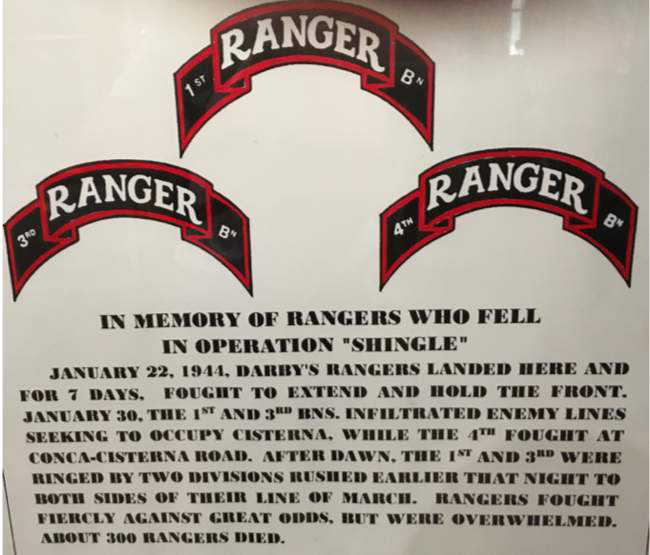by Pete Farmer
Following the invasion of Sicily in July of 1943 and the subsequent surrender of Italy to the allies, the German Army fell back to a prepared defensive position, the Gustav Line, running from Italy’s west coast and across mountains to The Adriatic coast.
Operation Shingle was conceived to land allied troops behind the Gustav line. The fishing and resort villages of Anzio and Nettuno, about 35 miles south of Rome, were selected for the landing sites. General Mark Clark chose the VI Corps under General John Lucas for the amphibious assault. Neither general had confidence in their leaders or the operational plan, viewing dedicated forces as understrength.
Though surprised, the Germans reacted quickly advancing reserve units to Anzio and establishing defensive positions in hills to the east. Additional divisions were diverted to Italy and by the end of January, 71,500 German troops were present.
VI Corps made two unsuccessful major attempts to breakout. An attack on Cisterna by the 3rd Infantry Division went terribly wrong when the 1st and 3rd Ranger Battalions stumbled into six German divisions preparing for their own attack. Of 761 Rangers, only 6 returned with 300 killed and the rest captured.
Both sides at Anzio fell into a defensive posture of trench warfare that lasted through the winter and into spring. The beachhead was always within German artillery range. War correspondent Ernie Pyle observed “men typically in safe roles in the rear were just as vulnerable as the fighting man”. VI Corps headquarters went underground and civilians were evacuated by sea.
With the arrival of Spring and the landing of additional units, a breakout attack began on May 23, called Operation Diadem, in coordination with attacks on the Gustav Line. The 1st day was intense with the 1st Armored Division losing 100 tanks and the 3rd ID suffering 955 casualties, the highest single day figure for any US division in WWII. The breakout was successful, but Mark Clark chose to head directly for Rome rather than block the retreat of German units from the Gustav Line, an original objective of Diadem.
Anzio and Nettuno were rebuilt after the war and today are again lovely fishing villages and beach resorts. They are just an hour away by train from Rome. There are no signs of the battles that raged there other than wall plaques, an obelisk and some statues and markers. There are two small museums. In Nettuno, there is one of two American cemeteries in Italy. The Sicily-Rome American Cemetery contains 7,860 headstones of servicemen and women to include 25 sets of brothers. The names of 3,095 missing are inscribed on chapel walls. A memorial statue, Brothers in Arms, symbolizes the fraternity between the Army (including Air Corps) and Navy that was essential to the success of the three amphibious assaults in Italy.

